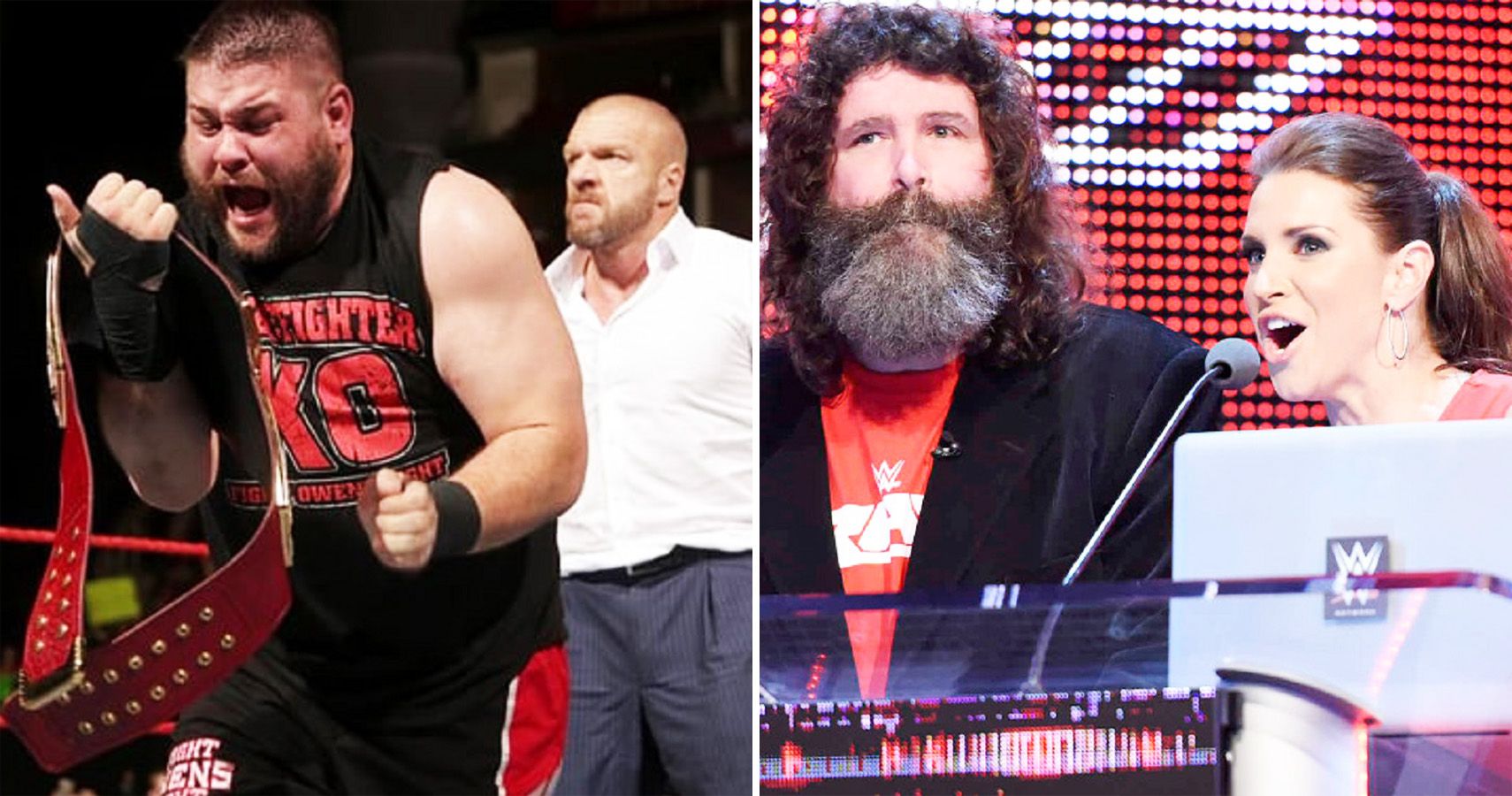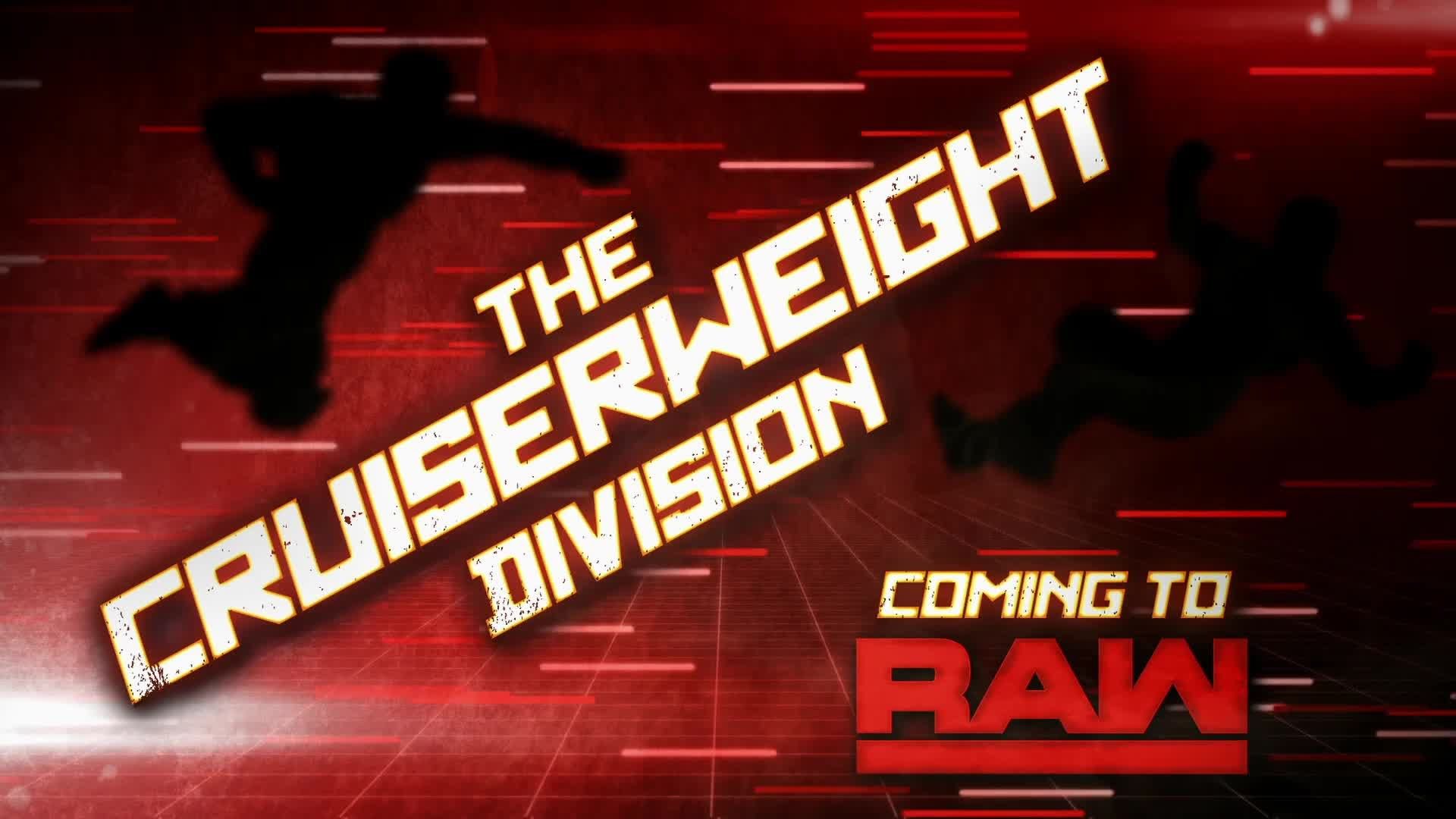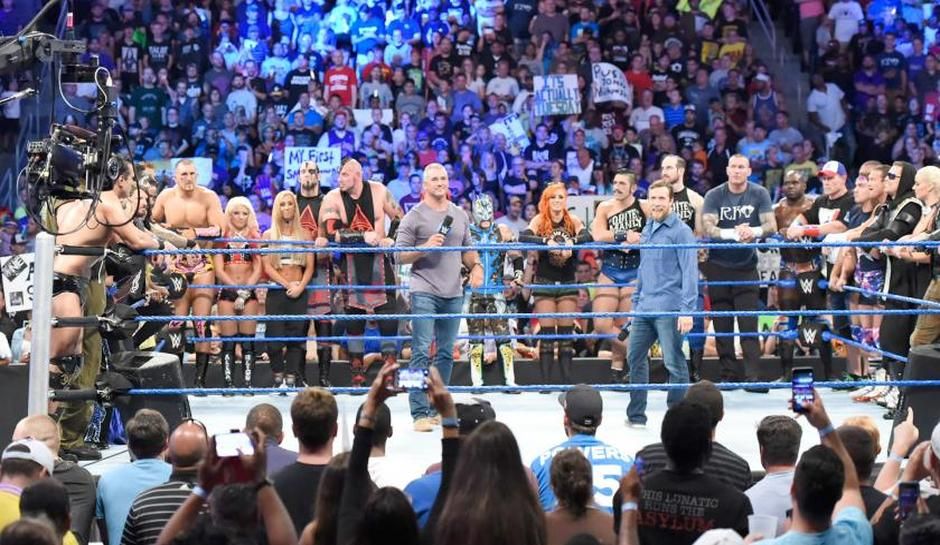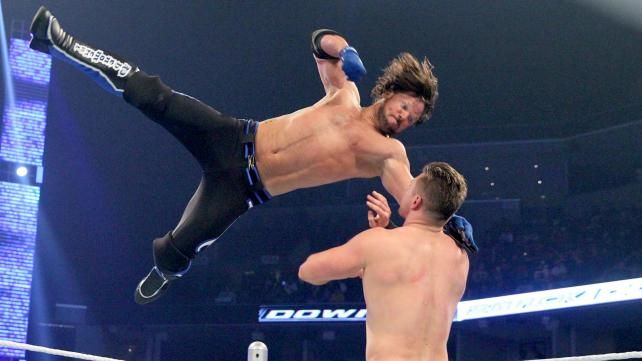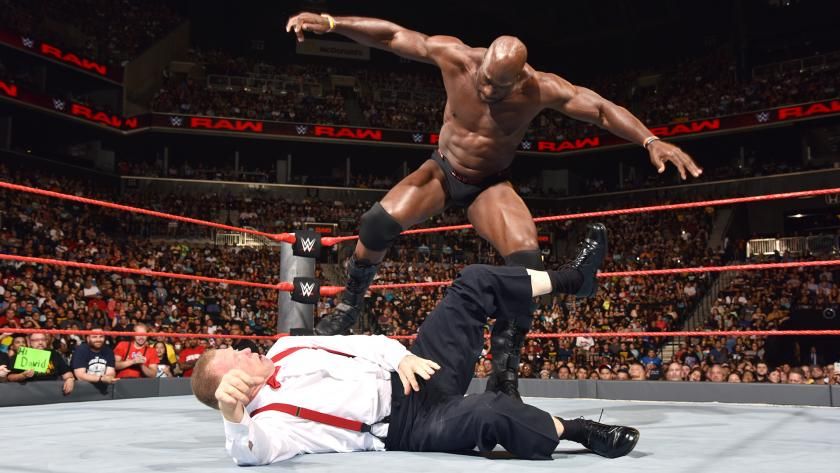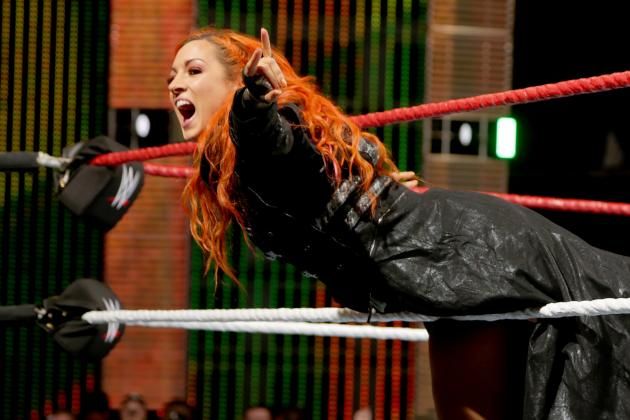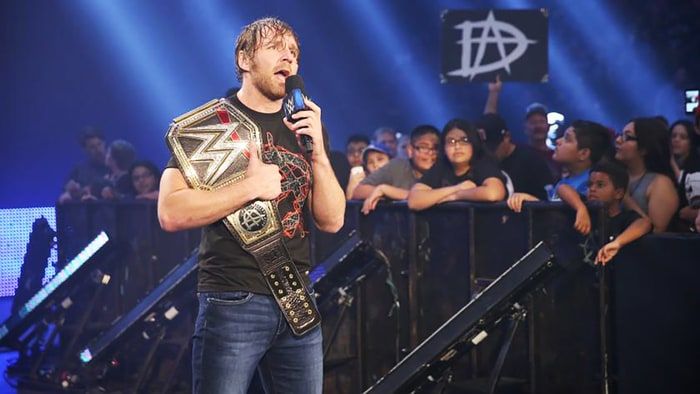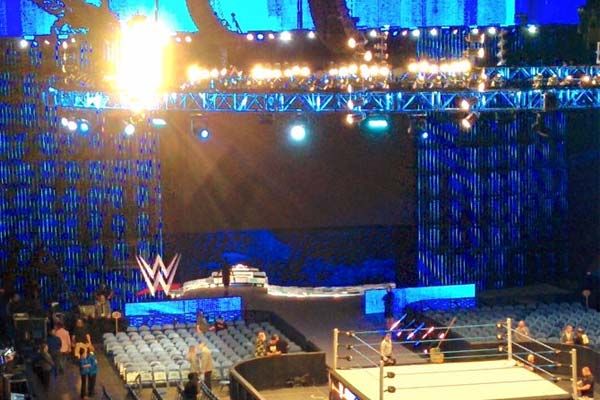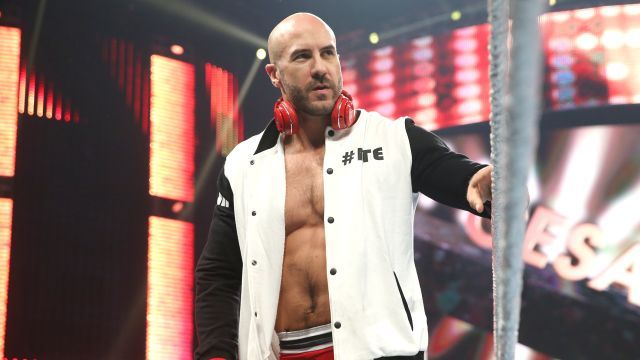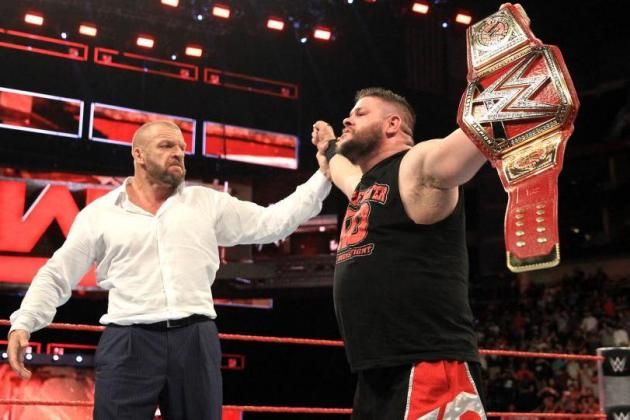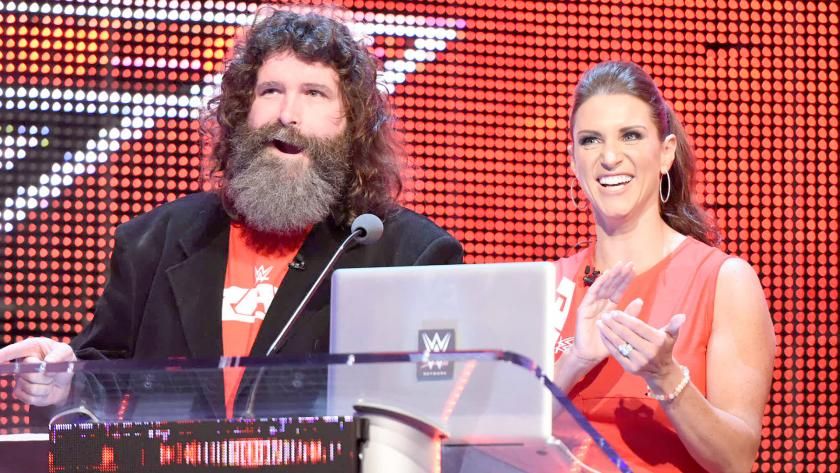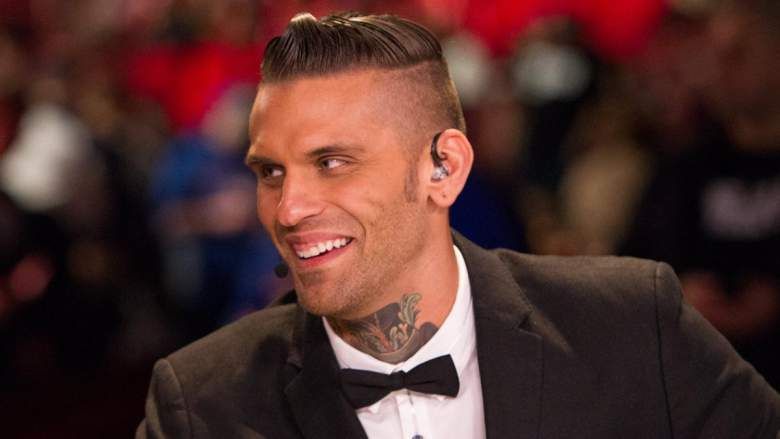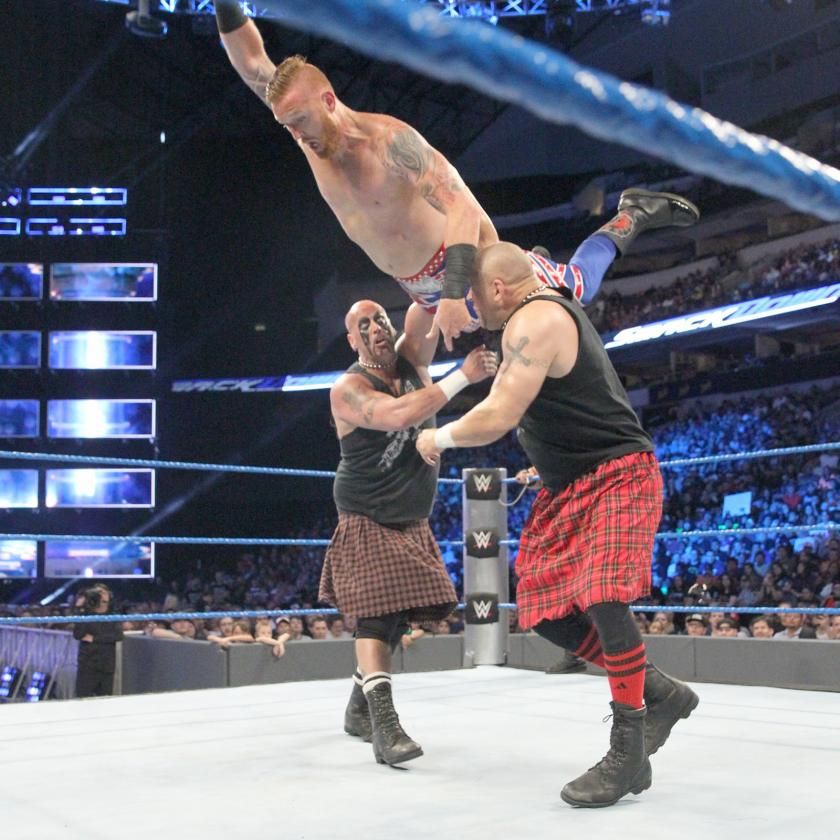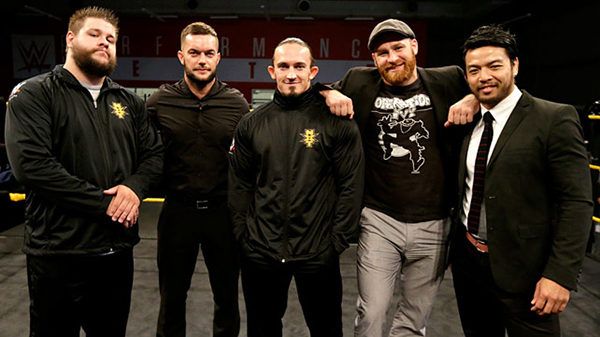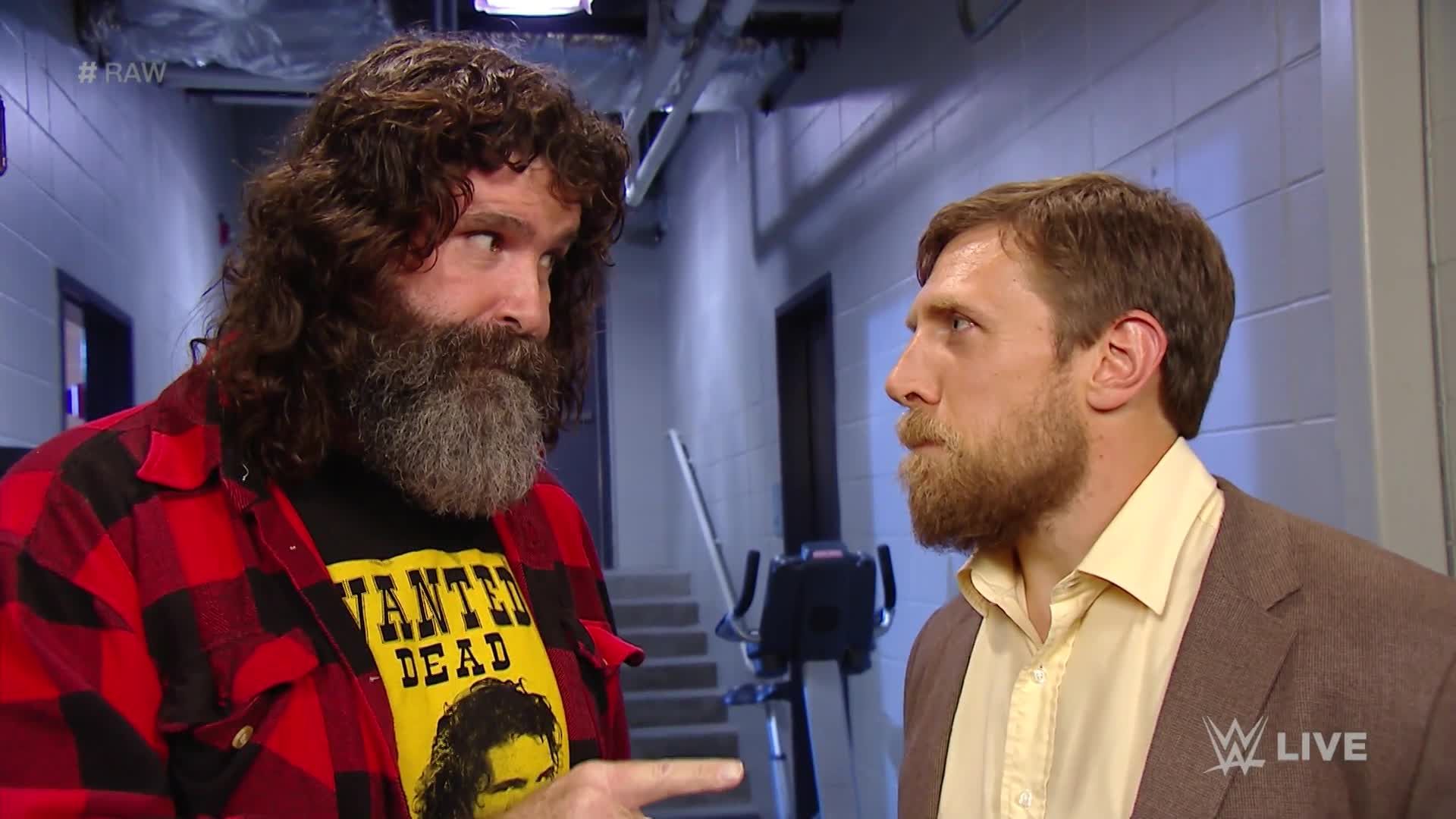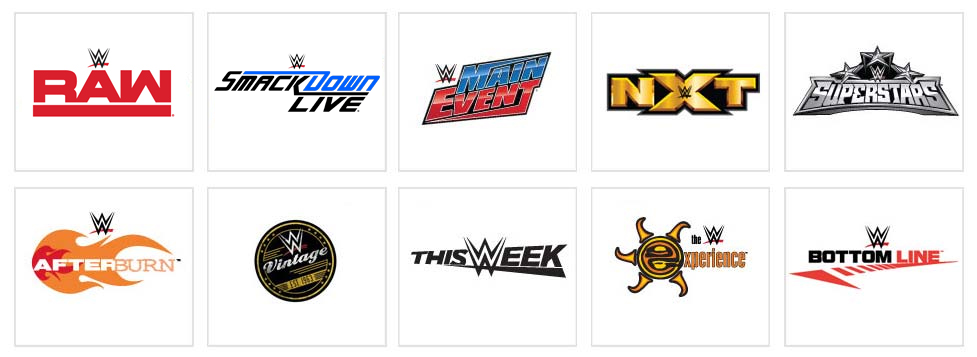Remember the Attitude Era, when the product was so hot fans were begging for a second show to tide them over from Monday to Monday? SmackDown debuted in August of 1999 as the solution.
For almost three years, SmackDown was merely an extension of the RAW experience (only bluer). The big angles, title changes and memorable moments were almost always saved for RAW, but again, the product was so hot that no one minded. By 2002, the company was coming off the terribly-received InVasion angle and was overflowing with talent acquired from the downfalls of WCW and ECW. A brand-split was implemented and the WWE roster split, with half becoming exclusive to RAW and half becoming exclusive to SmackDown.
For the next decade, SmackDown went through many changes and saw many ups and downs, but it always maintained a separate identity from its RAW counterpart. SmackDown was always more "sporty," while RAW was more "entertainment." The early days were conquered by Brock Lesnar and the “SmackDown Six.” Later years saw the establishment of The Undertaker as the brand’s top character. John Cena emerged, Edge dominated and CM Punk got his first taste of the main event spotlight, all under the Blue Brand.
And then, after years of poaching talent to keep the “more important” RAW show afloat, Vince finally pulled the plug on the brand-split and returned SmackDown to being “more RAW.” The problem was that it was no longer 1999. RAW was already three hours long and ratings were low. SmackDown struggled mightily, lacking an identity or a purpose.
Now, with an influx of new, young, NXT-trained talent, the brand-split is back on. But is it better than ever, or are the old problems reappearing?
Let’s take a look at some early hits and misses in the “New Era’s” new brand-split.
16 8. HIT: Cruiserweights
One of SmackDown’s highlights in the early days of the first brand-split was its cruiserweight roster. Guys like Rey Mysterio, Jamie Noble and Matt Hardy (V.1) made it an exciting division of the SmackDown program. Vince never knew what to do with the diminutive superstars (mostly he treated them as fodder for the big men he loved to push), but SmackDown’s writers knew the best thing to do was to give them the time to work and get out of their way.
Now the cruiserweights are coming to RAW, and if the WWE Network’s “Cruiserweight Classic” is any indication, the company seems ready to embrace them. RAW desperately needs something to help with the three hour run-time. Making a cruiserweight match a staple on RAW's second or (struggling) third hour would be perfect. Of course, that is only if the writers take the time to write good storylines that will enable the cruiserweights the opportunity to shine. That is not always the case, sadly.
15 8. MISS: SmackDown Still Feels Like The "B-Show"
Obviously SmackDown is more important now than it has been since, arguably, 2005, but it feels like the second string QB on the WWE roster. We’ll talk specific problems later; this is specifically concerning the fact that it seems as though Vince doesn’t see SmackDown as equal to RAW. If the “one man audience” doesn’t think SmackDown is important, the fans—especially casual fans—are eventually going to catch on and gravitate away from watching.
Consider the first feuds for the two world titles on either brand. On RAW, the first feud for the newly-created WWE Universal Championship was between Seth Rollins and Finn Balor. Rollins is a legit main-eventer; Balor dominated NXT for two years. What was SmackDown’s first big title feud? Dean Ambrose vs. Dolph Ziggler. Ziggler can be great, and the two worked hard in the feud, but Ziggler’s still a guy no one considers a real main-event contender anymore. It felt like small potatoes, which made SmackDown’s debut feud feel like small potatoes too.
14 7. HIT: SmackDown Has A Purpose
As said, SmackDown needing a reason to exist was the whole impetus behind the brand-split. NBC/Universal essentially demanded it as a condition of their bringing the show to the network. And despite the flaws that still exist, the blue brand does have an actual purpose.
Looking back on brand-split history reveals that Vince usually left SmackDown alone while he focused on RAW (which he always considered—and still does—the true “flagship show”). As a result, SmackDown was often streaky, with new talent getting a push (that they probably wouldn’t be getting on the more conservative RAW) and catching fire with the audience before being yanked over to Monday nights to be whittled down to a mere stereotype of their former self. But through all of those streaks, the fans of SmackDown would argue that it was the superior show. Right now, that's true too: SmackDown not only has a purpose, it has a leg-up on RAW.
13 7. MISS: RAW Is Still Shallow And Unfocused
For years, the biggest criticism against RAW has not involved the match-to-match booking, or who was champ or who was challenging for the championship. The most consistent complaint, through so-called “good stretches” and “bad stretches,” has been how sophomoric the writing/booking has been. RAW feels like it was written by a man with the attention span of a goldfish seeking to entertain a segment of the audience with the attention span of a ADD-riddled 8-year-old.
Feuds suddenly end with no proper resolution. Character motivations are often muddled or non-existent; babyfaces often act like heels and heels often act like one-dimensional stereotypes, with no depth or substance with which to attract potential weekly viewers. Everything just seems to be happening on a week-to-week basis, with little to no foresight or planning ahead.
It probably feels that way simply because there is no foresight or planning ahead.
RAW is still making all those mistakes, only now with half the roster.
12 6. HIT: Smackdown Is Refreshingly Good
Due to the fact that RAW was two hours long for the entirety of the brand-split, the only real difference in the two brands was the talent at their disposal and the quality of the writing/booking. As mentioned previously, the writing and booking was often superior to RAW, despite having less top talent to work with. Already that seems to be what is currently happening in the “New Era” of SmackDown. Vince is meddling heavily with RAW, which is creating a show without a long-term focus. SmackDown just seems more competently and carefully put together (since it’s probably not being rewritten on the fly two hours before showtime).
But there’s another difference that is already instantly apparent when comparing the two shows. RAW's three-hour run time is a real drag, but SmackDown by comparison is an easy-breezy two hours. It feels tight and focused, whereas RAW often feels haphazard and listless.
11 6. MISS: SmackDown Needs More Top Talent
The 2016 draft presented a startling and undeniable truth: RAW was overloaded and SmackDown was given the scraps. Sure, the blue brand got a few bones: the hottest talent currently working (AJ Styles) and the biggest name the company has (Cena), but there’s a reason Dolph Ziggler was the first WWE Championship contender. Ziggler got pushed because who else was available? AJ quickly moved away from Cena to enter the title picture, but after him…who’s left?
Vince was obviously worried that his three-hour RAW would be exposed with a small roster, but he overcompensated. Monday night basically got three main-event caliber players for every one that Tuesday night got. Go to the lower card and it’s the same problem: Where are the IC title contenders? None look credible. There are only three or four teams who could realistically hold the tag titles. There are only about six or seven women to feud over the women’s title. SmackDown is too thin.
10 5. HIT: Brand-Specific Stages
For years, WWE used the same generic “HD Set” for every televised show (except for WrestleMania). The only way you knew you were watching a replay of RAW versus a replay of Extreme Rules versus a replay of SmackDown was by the colored lights they would shine. Every time WWE debuts a new stage setup, fans are almost always impressed, and the HD Set was impressive. But then it became redundant…and boring…and tired…and lazy.
Now everything has been given a makeover. There is the sexy, cool gray padding that surrounds the ring. RAW has a big new stage design with commentary moved to the Nitro spot away from ringside. SmackDown has a new look too, one that is highly distinctive from RAW. And if SummerSlam is any indication, it looks as though PPV-exclusive stages are back. It may not seem like much, but it’s a little thing for which fans have been clamoring.
9 5. MISS: RAW Is Still Wasting Talent
You know what SmackDown needs? The talent with which RAW (i.e. Vince) is doing diddly-squat. You know who could have really given the Ziggler/Ambrose title match at SummerSlam some spark? Sami Zayn. What was he doing on the RAW brand at SummerSlam? He was wrestling in an untelevised match with Neville against the departing Dudley Boyz. I would throw in Neville too, as he’d be a shoe-in to give some shine to the IC title division, but I am holding out hopes that he’ll become the focal point around which RAW's cruiserweight division is built.
And then there’s Cesaro. Instead of being stuck in a pointless “best of seven” series with Sheamus, he too—like Zayn—could be an instantly-credible WWE World Championship contender. Fans are itching for him to get a proper push, but instead he’s mired in obscurity on RAW. How could a three-hour show with only half the roster with which to work be wasting talent? The mind…it boggles.
8 4. HIT: New Talent Is Getting Pushed
In the beginning of the original brand-split, RAW was basically Nitro and SmackDown was basically the old RAW. RAW featured a lot of big stars from the past (Triple H, HBK, Chris Jericho) plus WCW guys like Booker T, Scott Steiner, Kevin Nash and Goldberg. SmackDown, meanwhile, rolled with the next generation of main-eventers plus a few vets (Edge, John Cena, Brock Lesnar, Undertaker).
Eventually, both shows settled around two figures who carried their brands: John Cena on RAW and Edge on SmackDown. Every now and then, a new contender would emerge but things would always settle down back to those two staples.
At least in the early months of this brand-split, it seems that WWE is committed to having new faces carry both brand’s banners. Finn Balor, Kevin Owens, Dean Ambrose, AJ Styles, Seth Rollins are all (relatively) new to the main event scene, while John Cena and Randy Orton are just featured attractions. It really hits home that this is truly the “New” Era.
7 4. MISS: RAW Is Still A Three-Hour Slog
And speaking of RAW, if you thought the show was a drag a year ago, when everyone was available, it’s even more of a grind to get through today, without AJ Styles, John Cena (yes, John Cena) and Dean Ambrose to carry quarter-hour segments.
The brand-split should have seen the end of the three-hour RAW. The red-brand show should have dropped back to a tight, focused, two hour (plus overtime) broadcast. But, while that would be the most creatively-stimulating thing to do, it’s not the best financial decision, and the almighty dollar always wins out. The extra hour means more advertisement revenue, more chances to shill the latest sponsor and more opportunities to plug the latest USA show. This isn’t “wrestling” after all, it’s “sports entertainment.” RAW is, to quote Bilbo Baggins, stretched thin like “butter over too much bread.” But that’s one problem that isn’t going to change…probably ever.
6 3. HIT: Commentary Is Noticeably Improved
Part of this is due to SmackDown suddenly being worth watching, which means fans are tuning into Mauro Ranallo's commentary. That means the bar is raised considerably. Still, credit needs to be given where it’s due: Michael Cole has been doing some great work lately. There is still some dead weight as Byron Saxton has yet to contribute anything meaningful to RAW and David Otunga might be the single worst commentator I’ve ever heard.
However, it is oh so much better than it was before. No more do we have to hear Jerry Lawler telling the worst dad jokes with the most unfunny puns imaginable. No more do we have to listen to JBL shout obnoxious nonsense at Cole or Saxton (his tone is noticeably reduced on SmackDown). Now we get Corey Graves' sincere enthusiasm on RAW, Ranallo‘s sincere enthusiasm on SmackDown, and our sincere enthusiasm which happens as a result.
5 3. MISS: The "Divisions" Are Too Small On Both Shows
For some inexplicable reason, Vince decided that both shows needed their own version of the women’s title and the tag title. As previously mentioned, however, this has caused those two divisions to be reduced to hilariously small levels. There are so few tag teams to work with that jobber teams, like the old Headbangers, have to be called in to work one-off matches. Other vets like Rhyno are shoe-horned into odd-couple teams just to pad the SmackDown division’s depth.
A better solution would have been to make the women exclusive to one show and the tag teams exclusive to the other. Both shows need a top title and a mid-card title, but now we have eight different championships floating around (and possibly a ninth if the cruiserweights get one). There are just too many, with not enough talent on both brands to sustain it with a year’s worth of fresh match-ups.
4 2. HIT: New Opportunities
As much as I’ve been hard on the splitting up of the women and tag divisions, and as much as I’m nervous that neither brand has enough depth in any division to sustain fresh title feuds for a year (before the 2017 draft resets everything), I can’t help but be excited at what such thin depth actually means: It means WWE simply can’t lean on their old standbys.
New people have to be used, which means some new people are going to be given the ball and they are going to fail. That’s happened for decades in WWE, but unlike before, when Vince would just revert to an established star (Hogan, Triple H, Cena), he now has to give someone else a chance. Eventually he’s going to strike gold and stumble upon the next Stone Cold or the next John Cena, and he’ll call himself a genius. When that happens, we will let him and just be grateful for the new star.
3 2. MISS: Commissioners/GMs Are Stepping On Each Other's Toes
Another long-running complaint that fans hoped to be rid of in this “New Era” is the over-saturation of the McMahon family. Vince has greatly reduced his presence in front of the cameras, to the point that whenever he does appear, it’s a big deal. Unfortunately, in his place are Stephanie, Triple H and now Shane, all of whom have more than picked up the slack.
When WWE announced both brands would have general managers in the form of beloved retired wrestlers Mick Foley and Daniel Bryan, fans were excited. It looked like the days of a McMahon opening every RAW/SmackDown were finally over -- but nope. The McMahons are just as omnipresent as ever.
Why even have general managers when Stephanie and Shane are there every week? The McMahons book matches, boss people around, introduce new talent, create new championships, etc. Meanwhile, Foley and Bryan mostly stand around and repeat whatever the boss just said. It's redundant and tiresome.
2 1. HIT: No More Spoilers
Again, the reason for the “New Era” brand-split was to boost SmackDown’s ratings. Consider that mission accomplished. SmackDown is having its best ratings in years. Everything WWE wanted out of the split, it’s getting: SmackDown has a purpose, it’s solidifying a loyal fan base and it’s being watched live (as opposed to via DVR).
But the real reason why fans are tuning in on Tuesday nights is because it’s on Tuesday nights. It was just too easy to read the SmackDown spoilers on Wednesday morning and decide whether or not it was worth tuning in on Thursday or Friday night. WWE didn’t help matters either, as they would frequently announce on late-Tuesdays whenever a new champion was crowned. Now you have to tune in. And because you have to, and because it’s usually worth it when you do, fans are doing it: They’re tuning in and coming back. How novel!
The New Era is just getting underway, but if WWE learns from the mistakes of the past, and emphasizes the positives this new brand-split can bring, they can find a winning formula to last them for years to come.
1 1. MISS: It's All Just Too Much To Watch Live
WWE’s idea behind the brand-split was to give SmackDown a real purpose. The idea was a way to make fans have to watch it (particularly with its switch to live broadcasting), but there is a real danger in that.
Fans may decide that five hours of wrestling (plus another hour of NXT on Wednesdays) is just too much. They may decide to settle on watching one of the two shows live, and simply DVRing (and racing through) the other. That’s not what USA wants. They want revenue from a popular “live” show. So instead of two shows that fans have to watch, fans—exhausted from too much programming—may just pick a favorite, essentially cutting the viewership of both shows in half. If that happens, it’ll be panic time in Stamford. It behooves WWE to create two very different, yet equally good, shows for fans to watch. So far, they’ve yet to do so.

